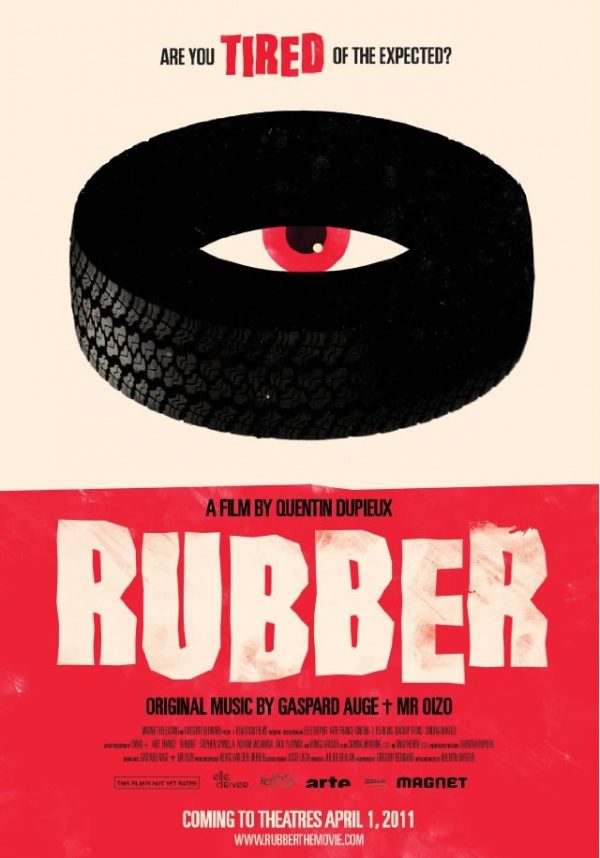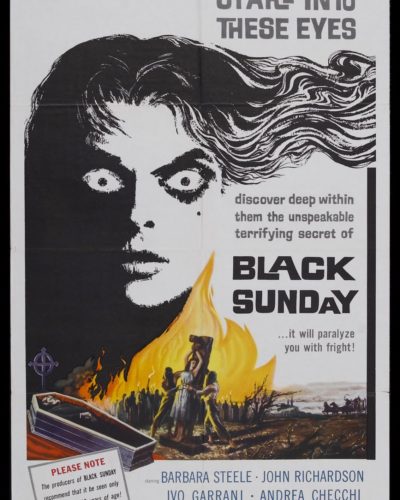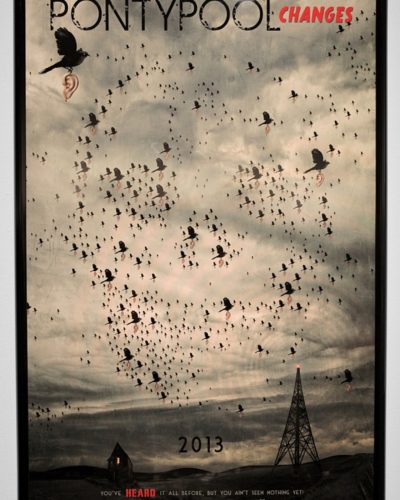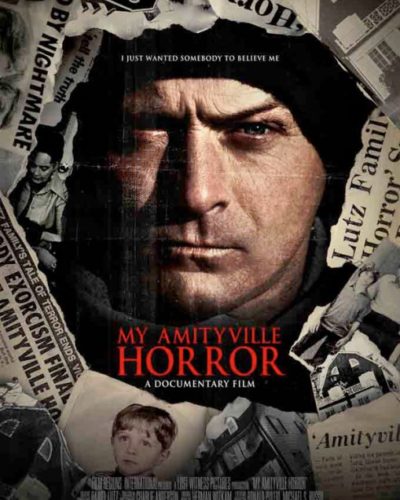When the Wheel Meets Terror: A Tire’s Tale
“In the Steven Spielberg movie ‘E.T.,’ why is the alien brown? No reason.” This line delivered early in Quentin Dupieux’s surrealist horror film “Rubber” signals to the audience to buckle up for an unconventional journey. Released in 2011 and directed by Dupieux, the film toys with the very concept of why things happen in movies. At first glance, “Rubber” is a story about a tire named Robert with telepathic powers, leading it to embark on a murderous rampage. But the film cleverly transcends its absurd premise, offering a satirical critique of the audience’s search for meaning in cinema.
A Wicked Spin on Atmosphere and Tone
At its core, “Rubber” is an audacious blend of dark comedy and horror, eschewing the traditional atmosphere one might expect. Dupieux’s approach is both deadpan and bizarre, creating a sense of the uncanny—horror emerging from the subversion of the everyday. The landscape is sun-scorched; the endless desert road becomes an unfathomable stage for the tire’s journey. Here, suspense is a slow burn, fittingly akin to the gradual inflation of a tire, where tension mounts not from the fear of what’s hidden in the shadows, but from waiting to see when the absurd will erupt into violence.
The Reel of Cinematography and Visuals
“Rubber”‘s visual style is a testament to Dupieux’s background in music video direction. The cinematography plays it surprisingly straight, thus heightening the absurdity. Wide angles and distant shots underscore the isolation of Robert’s trek, while close-ups anthropomorphize the tire, giving weight to its non-verbal ‘performance.’ The lighting is mostly natural, relying on the relentless sunlight to cast sharp shadows that make every crease in Robert’s treaded ‘face’ more expressive. The special effects, though minimal, are effective, culminating in moments of unexpected, almost comical gore that remind us we’re not just in any horror film; we’re in a movie that’s unafraid to sidestep the rules.
Sounds of Silence (and Rolling)
Audio serves as an accomplice in “Rubber,” twisting the screws of tension with a soundtrack that’s both eerie and whimsical. The sound effects are the film’s unsung hero; the simple roll of a tire or its crushing impact becomes a symbol of impending doom. Occasional silences, too, are strategic, playing into the unnerving uncertainty of what this sentient tire might do next. Notably, for a film that revels in the subversive, the decision to occasionally embrace a Hitchcockian lack of score during certain kill scenes only emphasizes the alien nature of the antagonist.
Unconventional Cast, Unpredictable Terror
Discussing the performances feels almost secondary in a film where the lead actor doesn’t possess a pulse, let alone a face. Yet zipping past this fact would ignore the quirky charm of the human cast, who admirably play it straight amidst the madness. The characters border on caricature, and yet, they’re just believable enough in their reactions to the preposterous events that they anchor the film’s reality. It’s as if an ensemble from a Coen Brothers’ caper walked into the wrong set, and that’s precisely what makes it work.
The Horror Genre Deflated?
To pigeonhole “Rubber” into conventional horror subgenres would be a disservice to its unique identity. If anything, it is a meta-fictional critique of horror elements themselves. The film both utilizes and satirizes psychological horror tropes, refusing to induce fear through traditional tactics. Instead, it leans into the humor of the unexpected, the shock value of anti-climax, and the fascination with the bizarre behavior of its rubbery anti-hero.
Themes Rolling Deeper: More Than Just a Spooky Tire
Themes of observation, meaninglessness, and audience complicity run through “Rubber,” as it cunningly asks whether “No Reason” is itself a form of articulation. Through the lens of horror-comedy, Dupieux interrogates our desire for narratives to make sense, challenging the spectatorship within and beyond the silver screen. It’s a film that looks back at its audience, questioning our voyeuristic hunger for violence and resolution.
Final Thoughts: Tread Carefully and Enjoy the Ride
As a horror movie, “Rubber” is more thought-provoking and innovative than genuinely frightening. It’s a film that reels you in with its strangeness and keeps you engrossed by toying with your expectations. Horror aficionados with a penchant for the avant-garde will find it a refreshing detour from the beaten path, while mainstream viewers may either find it a welcome oddity or be left scratching their heads.
Compared to contemporaries, “Rubber” stands alone, though echoes of it can be found in the dark humor of works like “Tucker and Dale vs. Evil.” It peels away at surface-level scares, instead poking at the brain with philosophical barbs wrapped in layers of absurdity.
Ultimately, “Rubber” is a cultivar of genres, its strengths lying in its originality and commitment to its bizarre premise. The weaknesses, if any, are inherent to the viewer’s tolerance for a film that defies easy explanation. For those open to a cinematic experiment, “Rubber” is a rolling stone worth catching.
Be warned: beneath the rubbery exterior and moments of dark humor lies a film that doesn’t shy from moments of gore and unsettling imagery, although these always come with a wink. Viewer discretion and an open mind are advised.




